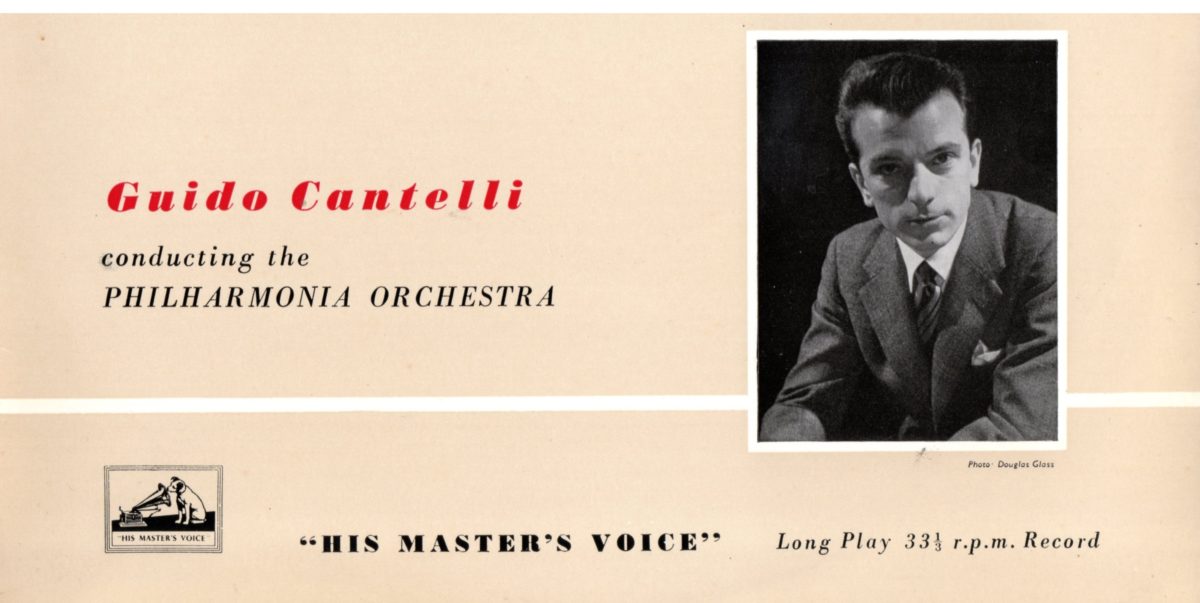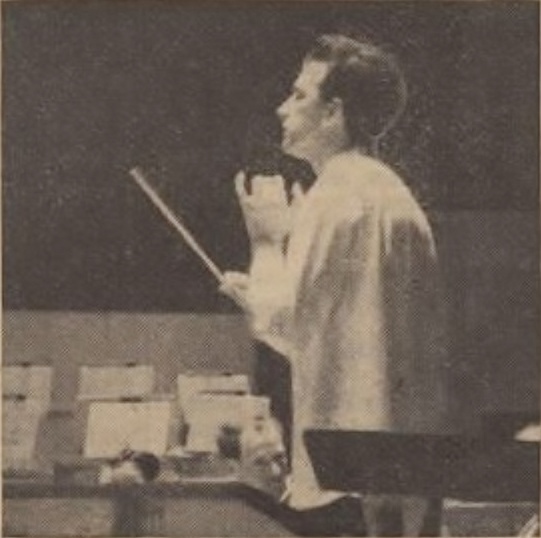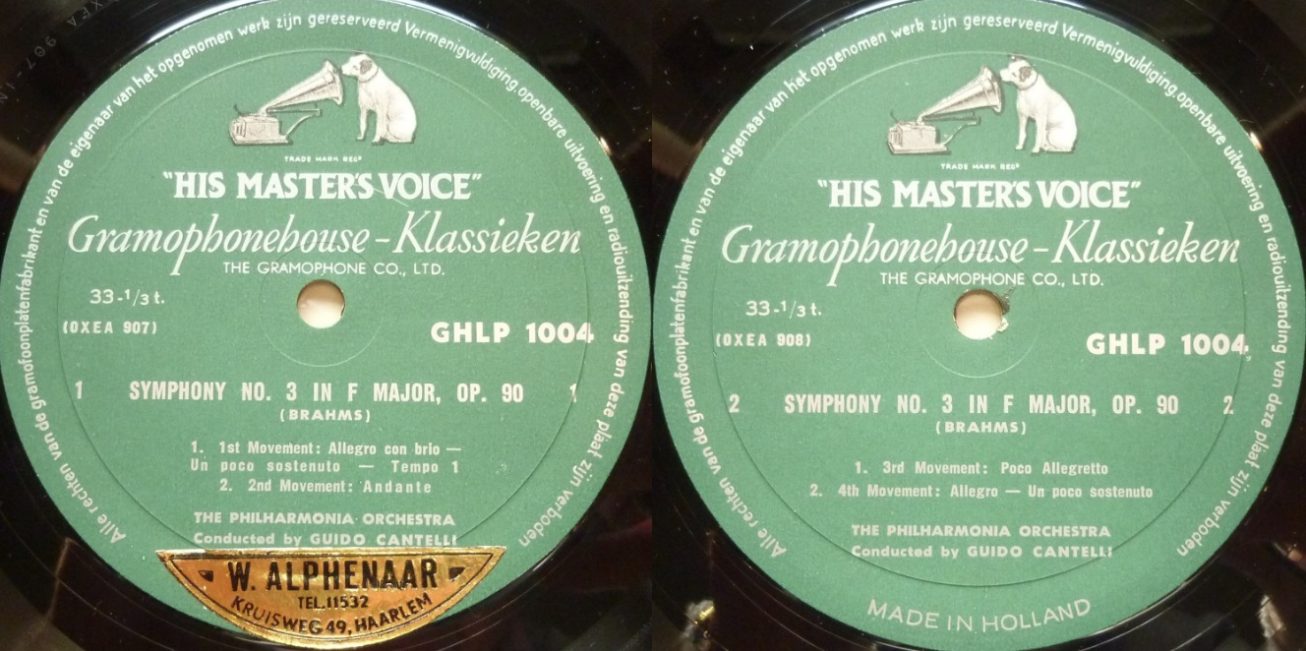
Cantelli – VI – Brahms: Symphonie n°3 Op.90 – 2 Versions
NBC SO Carnegie Hall – 15 December 1951 (Bande/Tape)
_________
Philharmonia Orchestra – 8, 9, 12, 16 &18 August 1955 (GHLP 1004-Mono)
La Troisième Symphonie est réputée comme étant la Symphonie de Brahms la plus difficile à interpréter. Si des chefs comme Walter ou Furtwängler ont signé des versions considérées comme des références, elle a posé beaucoup de problèmes même à de grands brahmsiens, à commencer par Toscanini qui, dans ses témoignages enregistrés, ne l’a vraiment réussie qu’avec le Philharmonia Orchestra, en concert à Londres au Royal Festival Hall en 1952.
C’était par contre une des grandes interprétations de Guido Cantelli qui en a laissé trois témoignages enregistrés (NBC SO, Boston SO, Philharmonia Orchestra).
L’enregistrement réalisé pour HMV/EMI à Kingsway Hall en 1955 a été capté à la fois en monophonie et en stéréophonie expérimentale. A cet effet , il y avait deux équipes de prises de son. L’enregistrement stéréophonique n’a été publié qu’en 1978, et depuis, c’est cette seule version qui est rééditée. Toutefois, en comparant ces deux captations, on constate qu’avec l’étalement en largeur de l’orchestre procuré par la stéréo, la réverbération de Kingsway Hall tend à diluer les timbres et à lisser les phrasés, alors que la prise de son mono, bénéficiant d’un judicieux placement microphonique qui permet à l’acoustique ample de la salle de porter pleinement le son de l’orchestre, est bien mieux définie: l’interprétation sonne de manière nettement plus vivante, et les timbres et les détails du phrasé sont mieux restitués. Avec la version mono, on est aussi musicalement plus proche de la version enregistrée en concert avec le NBC SO.
Le tableau des minutages ci-dessous montre qu’en studio avec le Philharmonia, et comme c’était en général le cas avec Cantelli, les tempi sont plus larges. Il montre aussi qu’en concert, Cantelli faisait la reprise (environ 3′) dans le premier mouvement, mais que cette reprise est malheureusement omise dans l’enregistrement commercial avec le Philharmonia.
Minutages/Timings:
NBC SO 15 Dec. 1951 (12’23; 7’57; 5’35; 8’06)
Boston SO 25 Dec. 1954 (12’28; 7’58; 5’45; 8’02)
NYPO 20 Jan. 1955 (12’40; 7’45; 5’40; 8’10)
Philharmonia Orch Aug. 1955 (9’57; 8’43; 6’18; 8’25)
[Philharmonia Orch Toscanini 1 Oct 1952 (12’27; 8’31; 6’17; 8’34)]

Cantelli Philharmonia Edinburgh
Among the Brahms Symphonies, the Third Symphony is considered as being the most difficult to perform. If conductors like Walter or Furtwängler have made recordings considered as references, it proved problematic even for great Brahms conductors, and for Toscanini to start with, who in his recorded testimonies was only successful with his 1952 London concert in Royal Festival Hall with the Philharmonia Orchestra.
On the other hand, it was one of the great performances of Guido Cantelli who left three recordings (NBC SO, Boston SO, Philharmonia Orchestra).
The 1955 recording for HMV/EMI in Kingsway Hall was made both in mono and in experimental stereo. For this purpose, there where two recording teams. The stereophonic version was published only in 1978, and since then, is the only one to be re-issued. However a comparison between both reveals that, because of the Kingsway Hall reverberation, the spreading in width of the orchestra brought by stereophony goes with a lower definition of the timbres and a smoothing of the phrasings, whereas the mono version, because of a well chosen microphone placement that allows the warm hall acoustics to bring a full-blooded orchestral sound, has much more definition: the performance sounds much more alive, and the timbres and the details of phrasing are better reproduced. With the mono version, we are also musically closer to the concert performance recorded with the NBC SO.
The timings (see above) show that in studio with the Philharmonia, and as was generally the case with Cantelli, the tempi are broader. They also show that, in live performances, Cantelli made the first movement repeat (about 3′), but that this repeat was omitted in the commercial recording with the Philharmonia.





4 réponses sur « Cantelli – VI – Brahms: Symphonie n°3 Op.90 – 2 Versions »
HD/Hi-Res (24 bits/88 KHz):
https://e.pcloud.link/publink/show?code=kZ9O2pZBN1K5AmkLrSuLGMhJ0VCjVOKDOgX
Format CD (16 bits/44 KHz):
https://e.pcloud.link/publink/show?code=kZWO2pZUaYolzWe9mLpBYHpULbeQ5OcSAL7
Thank you very much, as always, for your indescribable treasures!
Muchas gracias por los archivos tan interesantes .Del archivo de Cantelli me gustan las dos sinfonias ,con diferente sonido.
Brilliant. Thank You.